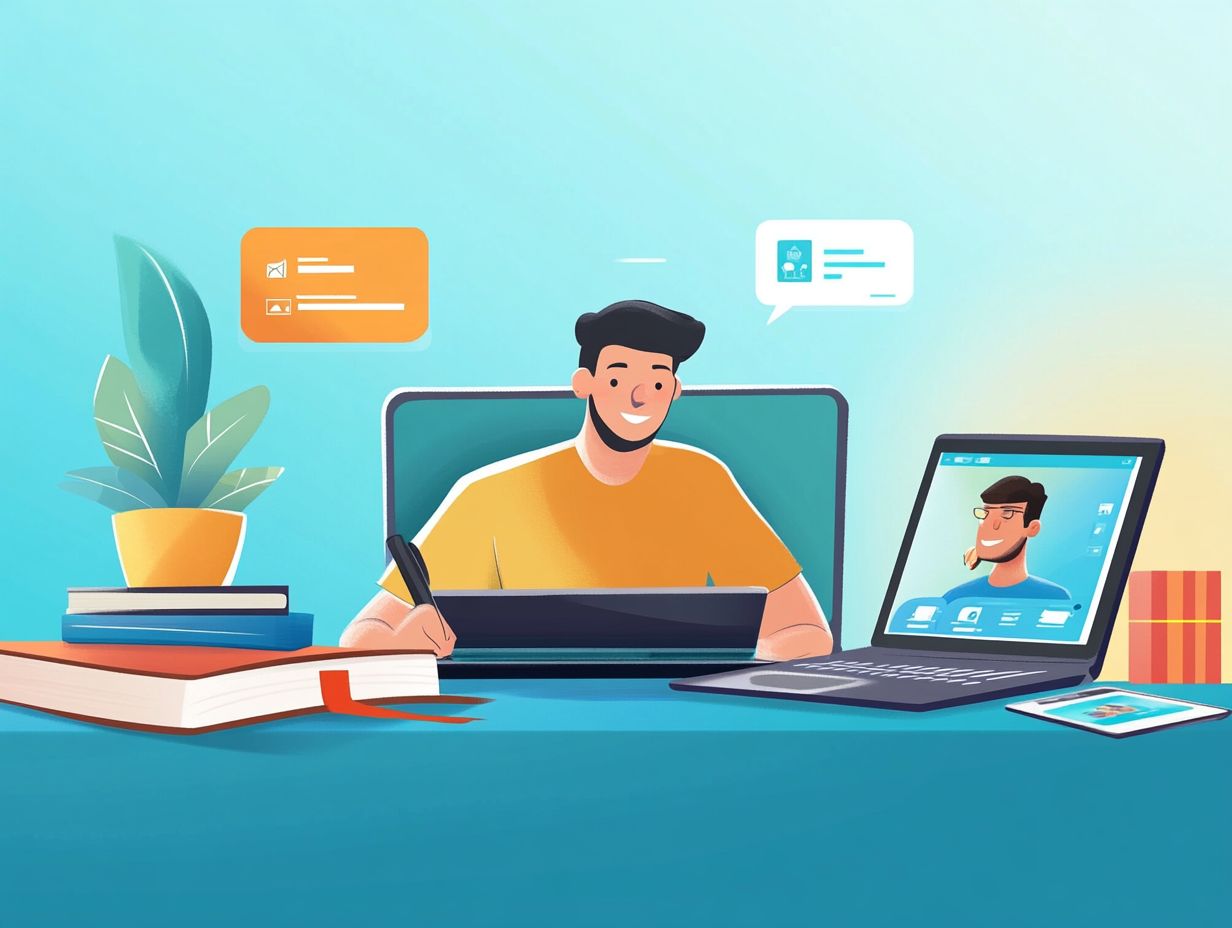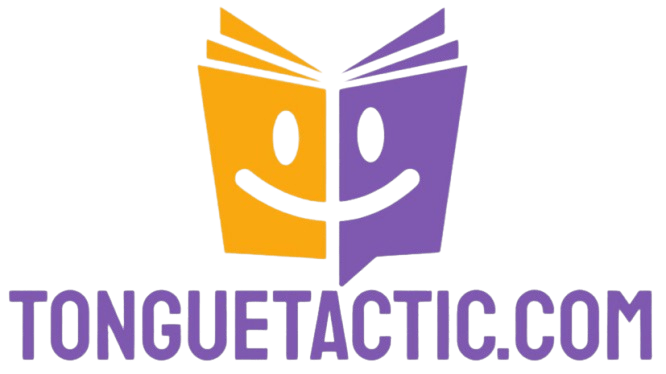how to use technology for language learning
In today s digital age, technology has revolutionized the way you approach language learning. With many interactive apps and online resources at your fingertips, you have an array of tools that can significantly enhance your learning experience.
This article delves into various types of technology designed for language learners like yourself, along with effective strategies to seamlessly incorporate these tools into your study routine. You ll discover practical tips aimed at maximizing your learning potential.
We ll tackle common challenges you might face and provide solutions to help you navigate your language journey effortlessly. Whether you re just starting out or seeking to refine your skills, this guide offers valuable insights to elevate your language learning adventure.
Contents
Key Takeaways:

Technology can enhance language learning by providing access to online resources, tools, and apps. Strategies and techniques such as incorporating multimedia and interactive activities can maximize the effectiveness of technology for language learning. Despite potential challenges, effective use of technology in language learning can be achieved by setting goals, staying motivated, and seeking support when needed.
Benefits and Advantages
The integration of technology in language learning presents a wealth of benefits that can greatly elevate your learning experience, especially in a classroom setting. By utilizing educational technology, you gain access to resources tailored to your specific language goals and can explore the role of technology in language learning, creating a more personalized journey. These tools simplify lesson planning for instructors, allowing them to adopt effective teaching methods that genuinely engage you.
Embracing interactive assessments and real-world materials enables educators to cultivate an enriching environment that enhances vocabulary mastery and comprehension skills, ultimately supporting your journey in acquiring a foreign language.
Types of Technology for Language Learning

In the realm of language learning, many technologies have emerged to accommodate diverse learning styles and preferences, fundamentally reshaping the educational landscape. Online platforms and learning apps like Duolingo and Quizlet give you easy ways to learn a new language. These tools enable you to hone your speaking skills and reading comprehension at your own pace, making the process both enjoyable and effective.
Classroom technology like multimedia content enhances the learning environment. It makes learning more like a game and effectively tracks your progress, ultimately equipping you for real-life conversations across various cultural contexts.
Online Resources and Tools
Online resources and tools have transformed the landscape of language learning, giving you access to a vast array of materials and options. From technology platforms like Google Translate to productivity tools such as Microsoft OneNote, these resources enable you to enhance your vocabulary and comprehension skills effectively.
By integrating podcasts and interactive assessments into your routine, you cultivate authentic interactions with the language, allowing for meaningful practice in listening and speaking. Platforms like Duolingo and Babbel turn the learning process into a game, motivating you with structured lessons that allow you to progress at your own pace.
Language exchange websites such as Tandem provide opportunities for peer-to-peer interaction, enabling you to converse with native speakers and sharpen your conversational skills. For those eager to apply their learning in real-world settings, websites like Meetup offer language clubs and discussion groups, creating immersive environments where you can practice with others. These vital tools support every aspect of language acquisition, boosting your confidence and proficiency in everyday communication.
Language Learning Apps

Language learning apps have become essential tools for you if you’re seeking a convenient and engaging way to enhance your language skills. Apps like Duolingo and Grammarly create interactive environments that make learning fun, allowing you to track your progress and achieve your language goals.
These amazing apps fit right in your pocket, making language learning fun anywhere you go! They are designed for mobile devices, allowing you to practice on the go and integrate language acquisition into your daily routine.
Many of these apps offer personalized learning paths, tailored to your skill level and preferred learning style, whether you lean towards visual or auditory techniques.
For example, Rosetta Stone immerses you in the language, promoting intuitive comprehension, while Babbel focuses on real-life conversations and practical phrases. Apps like Memrise use spaced repetition to boost your vocabulary retention, turning what might feel daunting into a manageable experience.
By incorporating social features, these platforms often enable you to connect with others, fostering a sense of community that motivates and inspires you to keep practicing.
Incorporating Technology into Language Learning
Utilizing technology in language learning has transformed traditional teaching. It engages students in innovative ways, such as the role of immersive technology, that cater to diverse learning preferences.
By using digital tools and real-life materials, you can create interactive experiences that promote self-directed learning and enhance student engagement.
This integration encourages learners to take ownership of their language journey, effectively practicing speaking, listening, reading, and writing skills through various tech tools.
Strategies and Techniques

Using effective strategies and techniques is essential for maximizing technology’s benefits in your language learning journey. Integrating collaborative practices and adaptive systems cultivates an engaging and inclusive classroom environment.
Tailoring these strategies to individual learning styles ensures every student can enhance their language skills meaningfully.
Incorporating tools like interactive language apps, digital flashcards, and virtual reality can turn traditional lessons into dynamic experiences.
For instance, encourage group projects on online platforms, allowing students to collaborate on multimedia presentations and practice their language skills in real-time.
Adding gamification elements, which make learning feel like a game, makes practice enjoyable and rewarding, motivating learners to engage more deeply.
Regular tech-based quizzes provide immediate feedback, helping both teachers and students effectively measure progress.
By blending these tools into your curriculum, you create a vibrant environment where learners are more likely to thrive.
Maximizing the Use of Technology for Language Learning
Maximizing technology in language learning means using various tools and strategies to create an effective learning environment that meets your unique needs.
By incorporating feedback mechanisms that monitor your progress, educators can offer tailored support to enhance your language acquisition journey. This method fosters continuous improvement, enabling you to develop your speaking, listening, reading, and writing skills effectively as you aim to achieve your language goals.
Tips for Effective Learning
Effective learning strategies can boost your language skills. Use technology to encourage self-directed learning and engage with educational apps.
Set clear goals to guide your learning. Incorporate diverse materials to support vocabulary mastery and comprehension.
Use online platforms like language exchange forums and social media to practice in real-life situations. Gamified elements can make learning more enjoyable and motivating.
Personalized learning tools provide pathways for your pace and style. By blending these strategies, you enhance your language skills and build critical thinking abilities.
Challenges and Solutions in Language Learning
While technology offers a wealth of opportunities for language learning, it also brings challenges that you, as both an educator and a learner, must navigate.
Factors like access to digital tools and differing levels of technological proficiency can impede effective language acquisition.
Recognizing these challenges and devising actionable solutions is vital to ensuring that every student can fully benefit from innovations in educational technology.
Overcoming Common Obstacles
Overcoming common obstacles in language learning requires a strategic approach and a willingness to adapt. Strong support for English Language Learners (ELL) can bridge skill gaps and empower every learner!
Address potential barriers now. Unequal access to technology creates disparities in learning outcomes among students.
Institutions should adopt hybrid models that blend in-class resources with online tools. This ensures that those without devices can still engage meaningfully in the learning process.
Interactive platforms, like language exchange forums, boost student engagement. They allow learners to practice their skills in real-world scenarios.
Create a community where technology becomes a supportive ally. Language learners can build confidence and proficiency, reaching their linguistic aspirations.
Frequently Asked Questions
What are some benefits of using technology for language learning? Technology provides access to a wide range of resources and can enhance your skills by showing you how to use videos for language learning. It makes learning engaging and offers personalized experiences.
What are some popular tools for language learning?
Popular tools include apps like Duolingo and Babbel, online tutoring platforms like iTalki, and language exchange apps like Tandem.
How can I practice speaking a new language with technology?
Use language exchange apps to chat with native speakers. Voice recognition software can help with pronunciation practice.
Can technology help with learning a language that uses a different alphabet?
Absolutely! Many apps provide instruction for different alphabets, and there are virtual keyboards available for practice.
How can I track my language learning progress?
Many language learning apps offer progress tracking features. You can also use spreadsheets to set goals and monitor your advancement.
Is it possible to learn a language solely through technology?
Relying only on technology isn t recommended. Engage in conversations with native speakers for full language immersion.






